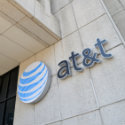AT&T Adds 2.8M Subs Across US & Mexico, Various Connected Devices in Q2
CFO talks TWC, Capex, FirstNet, 5G and more on wide-ranging Q2 call.

AT&T added 2.8 million subscribers in its second quarter -- across both the US and Mexico -- on a panoply of devices, from phones and tablets to connected cars, even as it lost traditional pay-TV customers.
AT&T Inc. (NYSE: T)'s CFO John Stephens took on a wide range of issues on the operator's second-quarter earnings call, dealing with everything from FirstNet emergency responder details, to the status of the Time Warner Inc. (NYSE: TWX) acquisition, to overall subscriber numbers.
Of the 2.8 million subscribers AT&T says it added overall, 2.3 million of these were in the US, covering phones, tablets and connected cars, although the company didn't split out specific numbers on some of the different connected devices. Meanwhile, 476,000 net adds came from Mexico.
AT&T's U-verse lost 195,000 subscribers in the second quarter and 156,000 DirecTV satellite customers. Stephens put this down to "involuntary churn" -- non-paying customers having their accounts stopped -- and bundling competition from rivals in markets where Ma Bell doesn't yet have fiber. The operator notes, however, that it added 152,000 DirecTV Now streaming customers for the quarter.
Stephens said that AT&T still expects the Time Warner deal, which is still under DOJ review, to close by year's end. The CFO described reports of possible changes to AT&T's top management after the deal closes as "premature."
AT&T is also sticking to its guidance of $22 billion for capex for the year, despite winning the FirstNet nationwide LTE emergency responder deal, which it expects to start turning on spectrum for this year.
In part, this is because of the $6.5 billion "co-pay" from the FirstNet organization for the network deployment. It is also because AT&T will only have to "touch the tower once," according to Stephens to deploy the 20MHz of FirstNet spectrum as part of 60MHz of additional spectrum overall. (See AT&T's Gig Economy Driven by Spectrum Obsession in 2017.)
Five states -- Arkansas, Iowa, Kentucky, Virginia and Wyoming -- have already opted into the FirstNet program. Nationwide, states have until mid-December to make a final decision. "Work on the FirstNet process can start as soon as a state opts in," Stephens says, adding that, "We are looking forward to announcing more states soon."
The operator is also looking at deploying more unlicensed Licensed Assisted Access (LAA) 4G LTE technology in some of its 20 "5G Evolution" markets by year's end, along with 4-band carrier aggregation technology, to boost network capacity and speed. (See US Operators Get Cracking on Unlicensed-LTE.)
AT&T has tested LAA at 750 Mbit/s in San Francisco recently. "We plan to expand testing in some parts of San Francisco and Indianapolis soon," Stephens said.
"This is one of our first steps towards 5G," Stephens claimed, although the technology involved all currently relates to 4G LTE upgrades. (See Surprise! AT&T Markets 4G Advances as '5G Evolution' and AT&T Expects 5G in Late 2018 or Early '19.)
AT&T reported revenue for the quarter of $38.9 billion, compared to $40.5 billion a year ago. Earnings per share were $0.79, up almost 10% on the previous year's quarter, beating Thomson Reuters expectations of $0.74 for the spring quarter.
AT&T was up $0.97 at $37.19 in after-market trading on Tuesday evening.
— Dan Jones, Mobile Editor, Light Reading
About the Author(s)
You May Also Like




.jpg?width=300&auto=webp&quality=80&disable=upscale)







